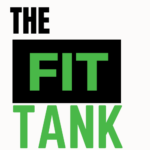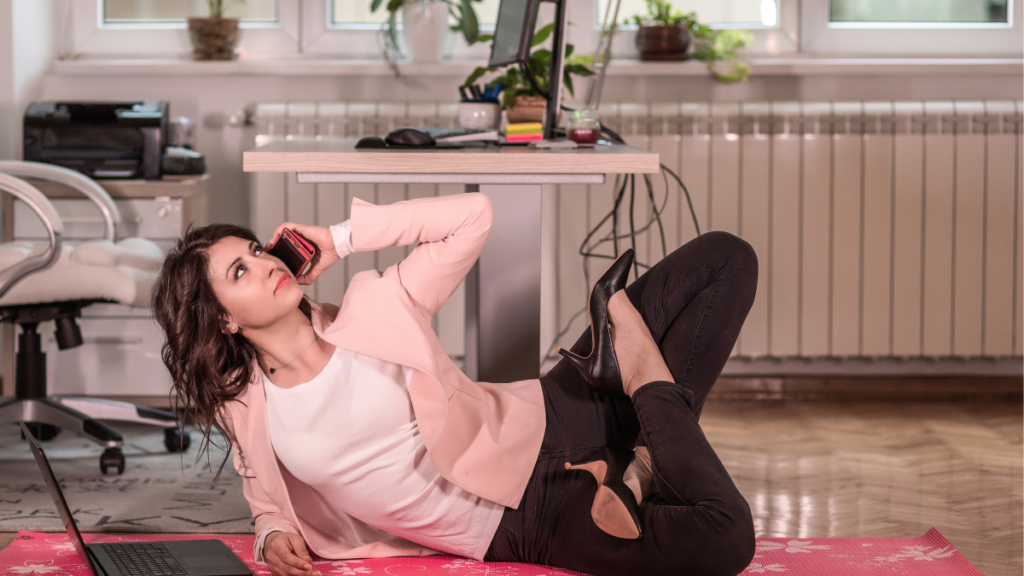Tech neck, slouching, hunching, huddling?
All of these are symptoms of our desk-bound culture, especially now that Covid has changed the way people work by introducing more working-from-home options.
Many days we are glued to Zoom meetings or relying on extra conference calls, which results in more time sitting.
So if your eyes are bleary from staring at a screen and you have been in your seat the majority of your day, these five yoga moves will break you out of that slump and boost your energy in five minutes or less.
Seated Cat and Cow
Scoot slightly forward in your desk chair so that your feet are evenly planted on the floor. Take a moment to wiggle your toes and spread them out a little (even if you have shoes on), this will help ground you.
Place your hands with your palms facing down on your thighs or simply hands on the desk in front of you.
As you breathe in, arch your back away from the chair, feel your hips rock a little as your belly moves forward towards your desk, lift your chest and bring your chin up.
Gaze to where the ceiling and the wall come together. This phase is the seated Cow pose.
As you breathe out, do the opposite. Round your back towards the chair backrest and suck your stomach away from your desk as your hips rock a little and you tuck chin to chest.
Soften your eye gaze or close your eyes. This phase is seated Cat pose.
On each inhale repeat your seated Cow pose and on each exhale counter it with a seated Cat pose until you develop a rhythm.
Start gently and slowly for a maximum of 3-5 breaths. When you get comfortable with the movements, increase the number to 5-8 breaths.
Seated Spine Twists
Slide your desk chair away from your workspace so you have room to move. Start by scooting forward in your chair so that your feet rest easily on the floor.
Step your feet at least two fists’ distance apart. Take a deep breath in and as you exhale, turn your upper body to your right.
If it’s comfortable, rest your right hand on the back of your chair and your left hand on your right knee. Resist the urge to twist with your neck first, keep your eye gaze only slightly over your right shoulder.
Take at least one full round of inhaling and exhaling on the right side. Return to center. Take a deep breath in and as you exhale, twist your upper body to your left side.
Depending on the style of chair you use you may rest your left hand on the chair and your right hand on your left knee. Shift your eye gaze over your left shoulder if it feels good to turn your head. Inhale. Exhale.
Turn back to the start point and repeat if desired. Twisting helps alleviate tension in the back and can act as a refresh for desk posture.
Breath of Joy
To prepare, slide your chair back so you can easily bend forward without hitting your desk.
Sit with feet on the floor and arms dangling by your sides. Slowly inhale and raise your arms up through a T shape and then overhead as you match the pace of your arms ascent to your inhale. (Don’t worry, your breath capacity will increase as you practice!)
Now exhale through your mouth and fold forward sweeping your arms down and back on the way down.
Come to rest with your torso close to or touching your thighs and your arms behind you like a skier. However, if you have any low back considerations, come to rest with your forearms on your thighs and tighten your core muscles as you exhale. On the inhale begin the cycle again, raising your arms as you breathe in.
Repeat 3-5 rounds. Breath of Joy can increase oxygen levels in the bloodstream and give your entire system a boost.
Figure 4 Stretch
How to? Sit with your back against the backrest of your desk chair. (Place a book or yoga block under the feet if they don’t touch the ground.) First, cross your right ankle over your left ankle and allow the right knee to open gently out to the right. If that feels good but you would like a deeper stretch, cross your right ankle over your left knee so your legs form a figure 4 shape. Hold the seat of your chair for support, or gently rest both hands against your right inner thigh. If that feels good but you want to go deeper, lean forward, place your hands on your desk and lower your torso toward your leg.
Allow gravity to do its job without forcing the right leg down or hip open in any way. See if you can breathe deeply into the stretch for 7 breaths. Repeat on the left side. Need more? The next time you lift your leg to cross the ankle over the knee, try not to touch the legs or ankles to assist. Can you do it? This works your healthy hip mobility!
Keyboard Crescent
How to? From your seated position breathe in and bring your arms overhead. Interlace your fingers and release your index fingers with your thumbs crossed. This hand position is called Kali Mudra (but it will look like the shape of a water gun with your hands). Draw your shoulders down away from your ears but keep your arms as straight as possible. Make sure you have a sturdy seat. As you exhale lean your upper body to the right, inhale back to the center and then exhale and lean your upper body to the left.
Make sure you come straight down to the right and left without twisting. Sway from side to side a few times focusing on lengthening both sides of the waist. When you finish, bring your hands down to the seat of the chair and let your chin drop toward your chest. Slowly roll the right ear to the right shoulder and pause and travel back through chin-to-chest before rolling the left ear to the left shoulder for a pause. This crescent moon-shaped sway will stretch the muscles of the back and side body, and the hand placement encourages the expulsion of negative energy. The neck stretch after the crescent will help alleviate symptoms of the forward head that can put undue weight on the neck and upper back.
The next time you start to feel like a slouching grouch or you’re ready to reach for that third cup of coffee midday, take a yoga break at your workstation instead. You’ll reap benefits inside and out. Practicing yoga at your desk for even 5 minutes every day improves posture and flexibility, decreases stress and tension, and increases concentration.
Even short yoga practices also help take the nervous system out of “fight or flight” mode. Just like hitting the refresh button on a website, moving your system into your parasympathetic nervous system (rest and digest mode) for a bit will improve your focus and your mood.

